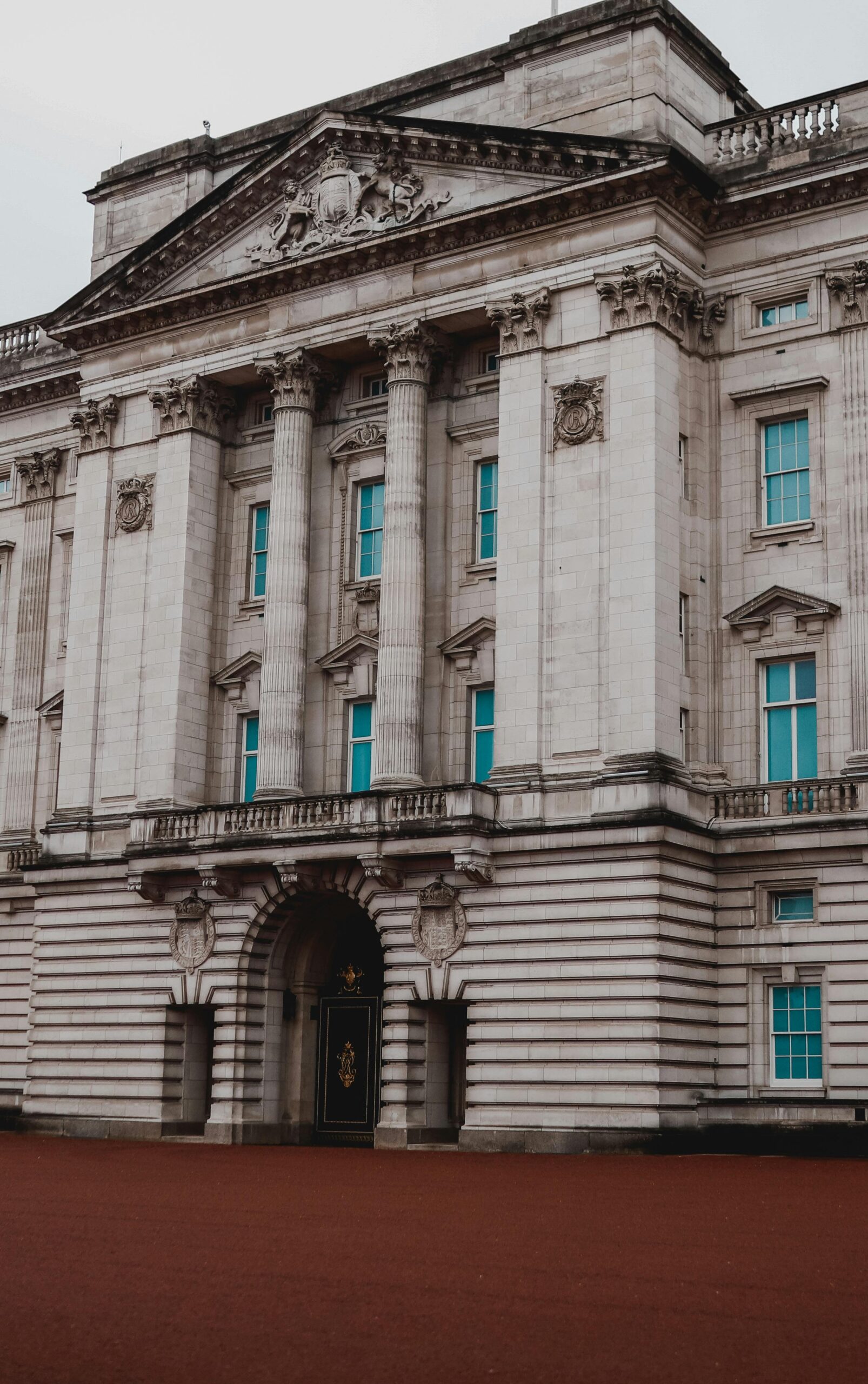London’s Traitors Gate: Uncover The Dark Secrets Of History invites you on a thrilling journey into the shadowy past of one of the city’s most notorious landmarks. Situated at the Tower of London, Traitors Gate has witnessed countless betrayals, executions, and secrets that echo through time. Are you ready to delve into the dark secrets that this historic gateway holds? From the infamous prisoners who passed through its arched entrance to the chilling tales of treason and intrigue, this article will unravel the mysteries that have long captivated historians and curious visitors alike.
As you explore the stories behind Traitors Gate, you’ll discover its role as a grim passage for those accused of treason. Did you know that many of England’s most prominent figures, including Anne Boleyn and Lady Jane Grey, entered the Tower through this very gate? Their fates were sealed within its walls, and the tales of their trials continue to fascinate us today. The air is thick with historical significance, and the weight of its past is palpable. What really happened behind those gates? What secrets lie hidden in the cobblestones?
In this article, we will navigate the rich tapestry of events that unfolded at Traitors Gate, revealing the untold stories and the dark legacies that have shaped London’s history. Are you intrigued? Prepare to uncover the intriguing tales of treachery, betrayal, and the relentless pursuit of power that have left an indelible mark on this iconic site. Whether you’re a history buff or a curious traveller, the mysteries of Traitors Gate are sure to leave you captivated!
The Haunting History of London’s Traitors Gate: What Lies Behind Its Stone Walls?
Nestled along the banks of the River Thames, London’s Traitors Gate hides a past that is both chilling and fascinating. This iconic entrance, located at the Tower of London, has seen countless figures of history pass through its heavy wooden doors, many never to return. The very name, Traitors Gate, evokes a sense of dread and foreboding. But what truly lies behind its stone walls? Let’s delve into the haunting history of this infamous landmark.
A Brief History of Traitors Gate
Traitors Gate was built in the late 13th century, originally as a water gate for the Tower of London. King Edward I commissioned it as part of his expansion of the Tower, but it soon took on a more sinister role. This entrance became the point of entry for many prisoners accused of treason, hence the name. Some notable figures who passed through this gate include:
- Anne Boleyn
- Thomas More
- Lady Jane Grey
- Robert Emmet
These individuals faced grave accusations and often met tragic ends, their stories etched into the very stones of the Tower.
The Symbolism of the Gate
Traitors Gate is more than just a physical structure; it serves as a symbol of the ruthless justice and political intrigue that characterised Tudor England. Once prisoners entered through its arches, they were typically subjected to a fate worse than death. The psychological impact of being taken through such a foreboding entrance must have been immense, knowing that they were seen as threats to the crown.
- Treason and Punishment: In Tudor times, treason was punishable by death, often by beheading. The Tower became a place of execution for many.
- Political Intrigue: The gate often symbolised the shifting allegiances of the court, where friends could quickly become foes.
The Architecture of Fear
The architectural design of Traitors Gate is both imposing and functional. Built from thick stone, with heavy wooden doors, it stands as a testament to medieval engineering. The gate was designed to be formidable, ensuring that prisoners were fully aware of their fate as they were brought in.
- Dimensions: The gate measures approximately 3.5 metres in height and 2.5 metres in width, designed to intimidate.
- Design Features: Its narrow entrance and high walls create an eerie atmosphere, making it feel claustrophobic.
Dark Secrets and Hauntings
Stories of hauntings and ghostly apparitions are rampant around Traitors Gate. Many visitors and historians have reported feeling a chill in the air or hearing whispers that seem to echo through time. Some of the most famous ghost stories include:
- Anne Boleyn’s Spirit: Many claim to see her ghost near the gate, lamenting her tragic fate.
- The Whispering Voices: Visitors often report hearing indistinct whispers, which they believe are the souls of those who suffered at the Tower.
The Gate Today
Today, Traitors Gate is a popular tourist attraction, drawing in thousands of visitors eager to learn about its storied past. The Tower of London is a UNESCO World Heritage Site, and the gate remains a focal point for those interested in the darker aspects of British history.
- Visitor Experience: Those who visit can take guided tours that recount the tales of treachery and betrayal associated with the gate.
- Educational Value: The gate serves as an excellent teaching tool for those looking to understand the complex history of royal politics.
Comparisons with Other Historic Gates
While Traitors Gate is steeped in tales of betrayal, it’s interesting to compare it with other historic gates around the world. For example:
| Gate Name | Location | Historical Significance |
|---|---|---|
| Traitors Gate | Tower of London | Entry for traitors and political prisoners |
| Brandenburg Gate | Berlin | Symbol of unity and peace |
| China Gate | Beijing | Historical entry point of the Forbidden City |
Each gate has its own unique history and significance, but none quite capture the same sense of dread that Traitors Gate does.
The history of London’s Traitors Gate is a haunting reminder of the political turmoil that has shaped the nation. As visitors walk through its heavy doors, they are transported back in time to an era when loyalty was fleeting and treachery was often met with a swift and brutal end. The stories of those who passed through remain alive, echoing through the ages and inviting all to explore the dark secrets hidden behind its stone walls.
7 Infamous Figures Who Met Their Fate at Traitors Gate: A Journey Through Time
In the shadow of London’s historic landmarks, Traitors Gate stands as a solemn reminder of the grim fate that awaited those accused of treason. This infamous entrance to the Tower of London has witnessed the arrival of many a condemned soul. It’s more than just brick and mortar; it’s a portal into the dark secrets of history, where power, betrayal, and execution intertwine. Today, we shall delve into the stories of seven notorious figures who met their grim ends at this gate, illuminating the darker side of British history.
1. Anne Boleyn: The Queen Who Lost Her Head
Anne Boleyn was once Queen of England, the second wife of King Henry VIII. Her ambition and desire for power led her to the heights of royalty, but they also brought her to the depths of despair. Accused of adultery, incest, and treason, she was arrested and brought through Traitors Gate in 1536. Her trial was a sham, and she was executed on the orders of her husband, leaving behind a legacy of intrigue and tragedy.
- Key Facts:
- Arrested: 2 May 1536
- Executed: 19 May 1536
- Last words: “I am the Queen of England.”
2. Thomas More: The Reluctant Martyr
A renowned statesman and author, Sir Thomas More was a key figure during the reign of Henry VIII. More opposed the king’s separation from the Catholic Church, which ultimately led to his downfall. In 1535, he was imprisoned and taken through Traitors Gate. More stood firm in his beliefs, refusing to take the Oath of Supremacy, which led to his execution.
- Important Dates:
- Imprisoned: April 1534
- Executed: 6 July 1535
- Famous Work: Utopia
3. Lady Jane Grey: The Nine Days Queen
Lady Jane Grey was a pawn in the deadly game of Tudor succession. Crowned as queen for just nine days in 1553, her reign ended in tragedy. Accused of treason after her cousin Mary I claimed the throne, she was imprisoned and brought to Traitors Gate. Her youth and innocence did not save her from the executioner’s block.
- Notable Facts:
- Reigned: 10 July 1553 – 19 July 1553
- Executed: 12 February 1554
- Age at death: 16 years old
4. Robert Emmet: The Nationalist Martyr
In 1803, Robert Emmet led an ill-fated rebellion against British rule in Ireland. After being captured, he was brought through Traitors Gate, where he was sentenced to death. Emmet became a symbol of the fight for Irish independence, and his poignant last speech echoed in the hearts of many.
- Key Points:
- Captured: 25 July 1803
- Executed: 20 September 1803
- Famous Quote: “Let no man write my epitaph.”
5. Guy Fawkes: The Infamous Plotter
Perhaps one of the most famous figures associated with treason in British history is Guy Fawkes. He was part of the Gunpowder Plot in 1605, intending to blow up the Houses of Parliament. Fawkes was captured, tortured, and taken through Traitors Gate, where he ultimately met a grisly end.
- Timeline of Events:
- The Plot: November 5, 1605
- Arrested: November 5, 1605
- Executed: January 31, 1606
6. John Brown: The Martyr of the Massacre
John Brown was a Scottish Covenanter executed in 1685 for his resistance to the oppressive policies of King Charles II. His fate was sealed when he was captured and brought through Traitors Gate, where he became a martyr for his cause.
- Significant Details:
- Arrested: 1685
- Executed: 1 June 1685
- Legacy: Symbol of Scottish resistance
7. William Wallace: The Braveheart of Scotland
William Wallace, the legendary figure of Scottish resistance against English rule, was eventually captured and brought through Traitors Gate. Accused of treason, he was executed in 1305. Wallace’s bravery and defiance made him a symbol of Scottish nationalism.
- Noteworthy Facts:
- Captured: 5 August 1305
- Executed: 23 August 1305
- Legacy: National hero of Scotland
Traitors Gate serves as a chilling reminder of the consequences of political ambition and rebellion. Each figure that passed through its arches carries a story of betrayal and tragedy, their legacies etched into the annals of history
Secrets of the Tower of London: How Traitors Gate Became a Symbol of Betrayal
The Tower of London is one of the most iconic landmarks in the world, but few know the dark tales that surrounds it. Among its many features, Traitors Gate stands out as a haunting symbol of betrayal. This entrance, through which many accused of treason were brought to face their fates, has seen centuries of history, intrigue, and sorrow. Let’s delve into the secrets of the Tower of London and explore how Traitors Gate became synonymous with treachery.
The Historical Context of Traitors Gate
Traitors Gate was built in the year 1275, during the reign of Edward I, primarily to allow the monarch to access the river Thames directly from the Tower. However, it soon became infamous for its more sinister purpose. Anyone who found themselves passing through this gate were often accused of treason, a serious crime that could lead to execution. The gate’s grim reputation grew, making it a feared entrance for many.
Key Historical Events Associated with Traitors Gate:
- Anne Boleyn’s Arrival (1536): The second wife of Henry VIII was brought through Traitors Gate after being arrested on charges of adultery and treason.
- Lady Jane Grey (1553): The nine-day queen who was also brought here before her execution, adding to the gate’s notoriety.
- Thomas More (1535): The former Lord Chancellor was taken through this gate, sentenced to death for refusing to acknowledge Henry VIII as the head of the Church of England.
The Symbolism of Betrayal
Traitors Gate is not just an entrance; it has become a powerful symbol of betrayal and the often brutal nature of justice in Tudor England. Many of the individuals who entered through this gate never walked out again, leading to the belief that passing through Traitors Gate was essentially a death sentence.
Why It Symbolises Betrayal:
- Historical Context: The gate was reserved for those who were seen as threats to the crown, representing political power dynamics.
- Public Perception: The stories of those who entered through the gate have been passed down through generations, cementing its place in cultural memory as a site linked to treachery.
- Literary References: Numerous literary works and plays, including those by Shakespeare, have referenced the gate, further embedding it in the public consciousness.
The Architecture of Traitors Gate
The design of Traitors Gate is quite unassuming at first glance, but its architecture tells a story of its own. The gate is part of a larger structure that includes the St. Thomas’s Tower. This tower is an example of medieval military architecture, built to withstand sieges and attacks.
Features of Traitors Gate:
- Water Access: The gate allows for boats to dock, which was essential for the transport of prisoners.
- Heavy Iron Doors: These were designed to be secure, keeping uninvited guests away and ensuring that once inside, prisoners found it difficult to escape.
- Gothic Elements: The architecture reflects the styles of the 13th century, with pointed arches and intricate stonework.
The Impact of Traitors Gate on Modern Culture
Today, Traitors Gate continues to draw visitors from around the world, intrigued by its dark history. It’s often featured in ghost tours and historical reenactments, capturing the imagination of those who wish to experience a piece of London’s turbulent past.
Modern References:
- Tourist Attraction: The Tower of London, including Traitors Gate, is a top destination for tourists, with guides sharing tales of its past.
- Film and Literature: The gate has appeared in various films and books, showcasing its enduring legacy.
- Educational Programs: Schools often include visits to the Tower as part of their curriculum, teaching students about the complexities of British history.
Visiting Traitors Gate
If you are planning a visit to Traitors Gate, there are a few things to keep in mind.
Visitor Tips:
- Best Time to Visit: Early morning or late afternoon are ideal times to avoid crowds.
- Guided Tours: Consider joining a guided tour for in-depth knowledge about the gate and the Tower’s history.
- Photography: Traitors Gate offers striking visuals for photography enthusiasts, especially in the early morning light.
In the heart of London, Traitors Gate stands as a grim reminder of the past, encapsulating the stories of those who dared to defy the crown. As visitors walk through this historical site, they not only tread on ancient stones but also step into a narrative filled with betrayal, power struggles, and the ever-watchful eyes of history. This gate is more than just a passage; it is a portal to the secrets of the Tower of London and the tales that have shaped the very fabric of British history.
Exploring the Dark Legends of Traitors Gate: What Do Historians Reveal?
Exploring the Dark Legends of Traitors Gate: What Do Historians Reveal?
Nestled within the walls of the Tower of London, Traitors Gate stands as a grim reminder of the city’s turbulent past. Many people wonder what actually happened here. Historians have long delved into the dark legends associated with this infamous entrance, revealing a tapestry of betrayal, punishment, and political intrigue. This article uncovers the secrets of Traitors Gate and examines its significance in British history.
The Origins of Traitors Gate
Traitors Gate was built in the 13th century, originally named after its use as a point of entry for prisoners accused of treason. They were often nobility or political figures who fell from grace. The structure served as a gateway to the Tower of London, which was both a royal palace and a prison, housing some of the most notorious figures in British history.
Some key historical events and figures associated with Traitors Gate include:
- Anne Boleyn: The second wife of King Henry VIII, she was brought through this gate in 1536, accused of adultery and treason. This led to her execution.
- Thomas More: The former Lord Chancellor, he was imprisoned at the Tower in 1534 before his execution in 1535.
- Lady Jane Grey: The nine-day queen, she was imprisoned here before her execution for treason against Mary I.
The Cultural Significance of the Gate
Over the centuries, Traitors Gate has become a symbol of betrayal and the harsh realities of power. The gate’s use to admit prisoners has inspired countless stories and legends. Many people believe that spirits of the executed still haunt the area. Visitors often report cold spots and eerie sensations, adding to the gate’s notoriety.
Historians have noted the following cultural impacts:
- Literature: Many authors have referenced Traitors Gate in their works, using it as a backdrop for tales of treachery and downfall.
- Media: Films and television series, such as “The Tudors,” have dramatized the stories surrounding the gate, drawing in audiences and shaping public perceptions.
- Tourism: Today, Traitors Gate is a popular tourist attraction, drawing people eager to learn about its dark history.
The Architecture of Traitors Gate
Traitors Gate is an architectural marvel, showcasing the design of medieval fortifications. Its imposing structure features heavy wooden doors, reinforced with iron, that have witnessed centuries of history. The gate is part of the larger Tower complex, which contains various buildings and towers, each with its own historical significance.
Notable architectural features include:
- Masonry: Built from local stone, the gate has aged remarkably well, maintaining its formidable appearance.
- Design Elements: The use of crenellations and arrow slits allowed for both defensive and decorative purposes.
- Access to the Thames: The gate was positioned strategically to allow access for boats, further emphasizing its importance in the transportation of prisoners.
Dark Legends and Myths
Traitors Gate is steeped in dark legends that historians have sought to unravel. One of the most famous tales involves the ghost of Anne Boleyn. According to popular belief, her spirit is said to roam the grounds of the Tower, particularly near the gate, where she made her fateful entrance.
Other myths associated with the gate include:
- The Cry of the Innocent: Many claim that the sounds of weeping can be heard on quiet nights, supposedly the spirits of those wrongfully accused.
- The Cursed Gate: Some local folklore suggests that those who pass through the gate shall face bad luck or misfortune.
- The Phantom Guards: There are reports of ghostly guards patrolling the area, possibly reflecting the gate’s long history as a site of imprisonment and execution.
What Historians Reveal
Historians approach the tales surrounding Traitors Gate with a critical eye, often separating fact from fiction. They emphasize the importance of understanding the socio-political context in which these events occurred. For example, accusations of treason were often politically motivated, used to eliminate rivals rather than based on actual wrongdoing.
Key insights from historians include:
- Political Context: Treason laws were often manipulated for personal gain, illustrating the cut-throat nature of political power in Tudor England.
- Public Sentiment: Executions were public spectacles, reflecting societal attitudes toward justice and retribution during the era.
- Legacy: The stories and legends surrounding Traitors Gate contribute to its status as a critical historical site, reminding us of the consequences of power struggles.
The Traitors Gate remains a powerful symbol of the darker sides of history. Visitors flock to this historic landmark not just to learn about the past but to feel the weight of the stories that echo through the centuries. Its legends, while often embellished, serve as a
The Untold Stories of Those Who Passed Through Traitors Gate: Are They Truly Forgotten?
The haunting echoes of history resonate through the cobbled streets of London, especially at a place so steeped in dark tales as Traitors Gate. This infamous entrance, located at the Tower of London, has seen a multitude of individuals pass through its stone archway, each with their own story, often forgotten by time. But are they really forgotten, or do their untold stories linger, waiting to be uncovered?
The Historical Significance of Traitors Gate
Traitors Gate was constructed in the 13th century and originally served as a water entrance to the Tower of London. It was here that prisoners, often accused of treason, were brought in by boat. The very name evokes images of betrayal, punishment, and the often-violent repercussions of political machinations. Over the centuries, many prominent figures have walked through this gate, leaving behind a legacy that still captivates today.
Notable Figures Who Passed Through
Several historical icons met their fate at the hands of the Tower’s infamous reputation. Here’s a brief list of some of the most notable individuals:
- Anne Boleyn: The second wife of Henry VIII, she was executed on charges of adultery and treason, famously passing through the gate with her head held high.
- Thomas More: A statesman and author, he was imprisoned for refusing to acknowledge Henry VIII as the head of the Church of England.
- Lady Jane Grey: The nine-day queen, she was deposed and executed for her claim to the throne.
- Robert Emmet: An Irish nationalist who was executed in 1803 for leading a failed rebellion against British rule.
These figures not only represent a dark chapter in British history, but their stories serve as cautionary tales about power, loyalty, and the price of dissent.
The Dark Secrets Behind The Gate
While the stories of these individuals are widely known, many lesser-known prisoners have also passed through Traitors Gate, their narratives overshadowed by the more illustrious names. The Tower of London was not only a prison but also a place of torture and execution. Here are some of the grim realities faced by those who entered through the gate:
- Torture: Many prisoners were subjected to brutal torture methods, including the rack and the scavenger’s daughter.
- Isolation: Loneliness was a common fate, with many prisoners spending years in dark, damp cells, often without any contact with the outside world.
- Public Execution: For some, the end came not quietly but in a public spectacle, meant to serve as a warning to others.
Forgotten Stories: The Unnamed Victims
Among the tales of betrayal and execution, many stories remain untold. These include the countless nameless individuals who fell victim to the political upheavals of their time. Often, their identities were lost to history, overshadowed by those whose names are etched in the annals of time. Some examples include:
- The commoners: Many ordinary people were accused of treason for speaking out against the crown or for simply being in the wrong place at the wrong time.
- Political prisoners: During various uprisings, numerous individuals were imprisoned without trial, their stories vanishing into obscurity.
- Foreign prisoners: Many were captured during wars and conflicts, held without recognition or a fair trial.
The Modern Perspective: Remembering the Forgotten
In recent years, there has been a growing movement to remember and honour those who passed through Traitors Gate, especially the lesser-known figures. This involves scholarly research, community discussions, and even theatrical productions that aim to bring these forgotten stories to light. Here’s how one can get involved:
- Visit the Tower of London: Engage with the exhibits that focus on the lives of the prisoners and their stories.
- Attend historical reenactments: These performances often dramatise the lives of both famous and obscure figures.
- Read historical novels and biographies: Many authors have taken it upon themselves to delve deeper into the lives of those who have been overlooked.
Traitors Gate remains a powerful symbol of the tumultuous history of England. It serves as a reminder that while some stories have been immortalised, many others lay in the shadows, waiting to be rediscovered. The true legacy of Traitors Gate goes beyond the famous names; it encompasses the myriad lives affected by political strife, a tapestry of human experience that should not be forgotten. As we navigate the complexities of our modern world, perhaps it’s these untold stories that can offer us valuable lessons from the past.
Conclusion
In conclusion, Traitors’ Gate stands as a poignant symbol of London’s tumultuous history, offering a glimpse into the darker chapters of the nation’s past. This iconic entrance to the Tower of London has witnessed the arrival of many notable figures, from Anne Boleyn to Lady Jane Grey, who were brought here under the shadow of betrayal and treason. Throughout this article, we explored the architectural significance of the gate, its role in royal imprisonment, and the enduring intrigue it holds for visitors today. As you plan your next trip to London, consider visiting Traitors’ Gate not only to marvel at its historical significance but also to reflect on the stories of power, betrayal, and resilience that echo through its walls. Engage with this piece of history and delve deeper into the complex narrative of the Tower of London, enriching your understanding of the city’s rich heritage.













